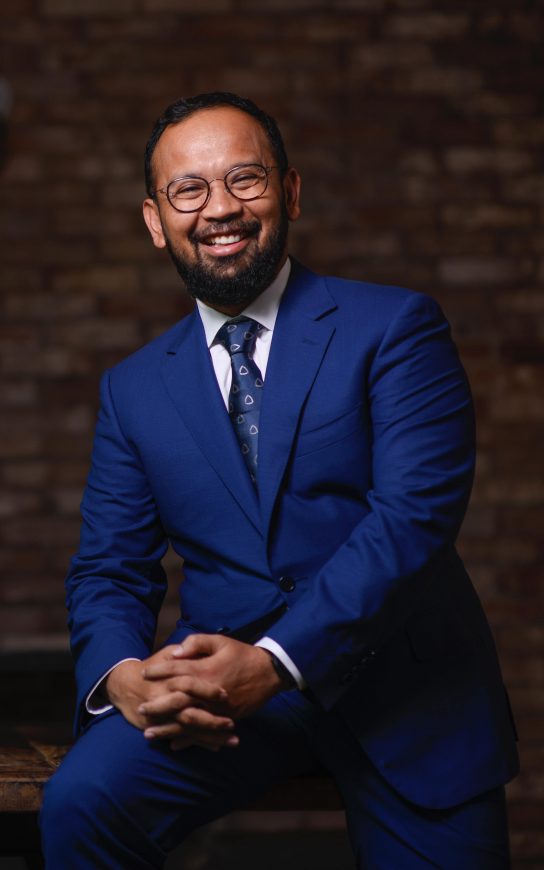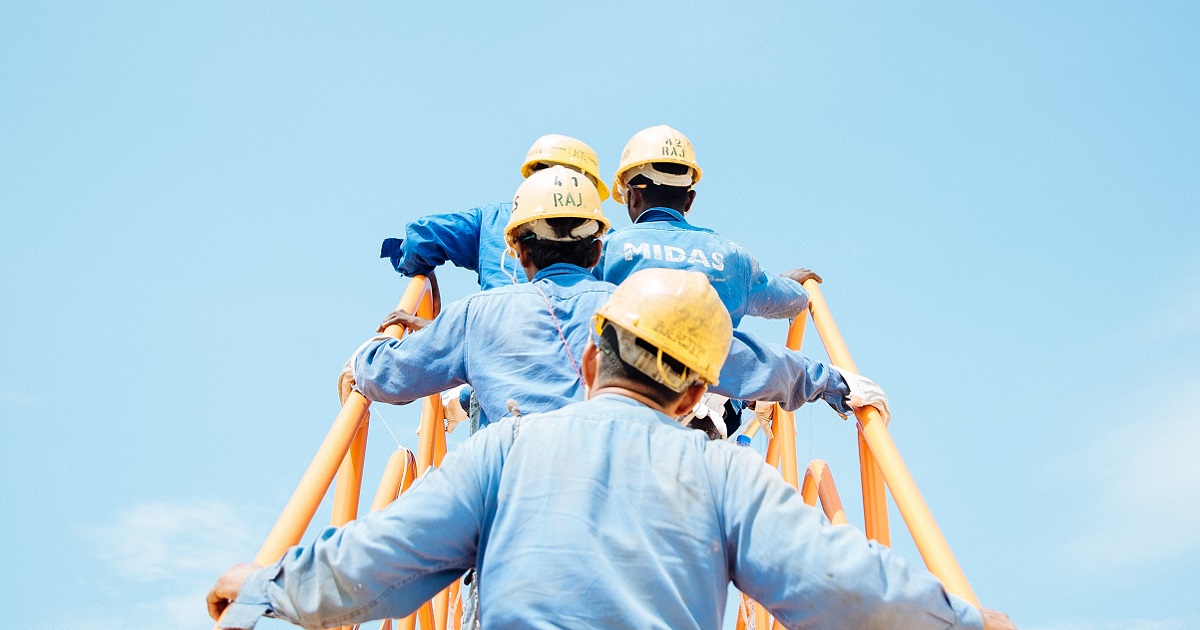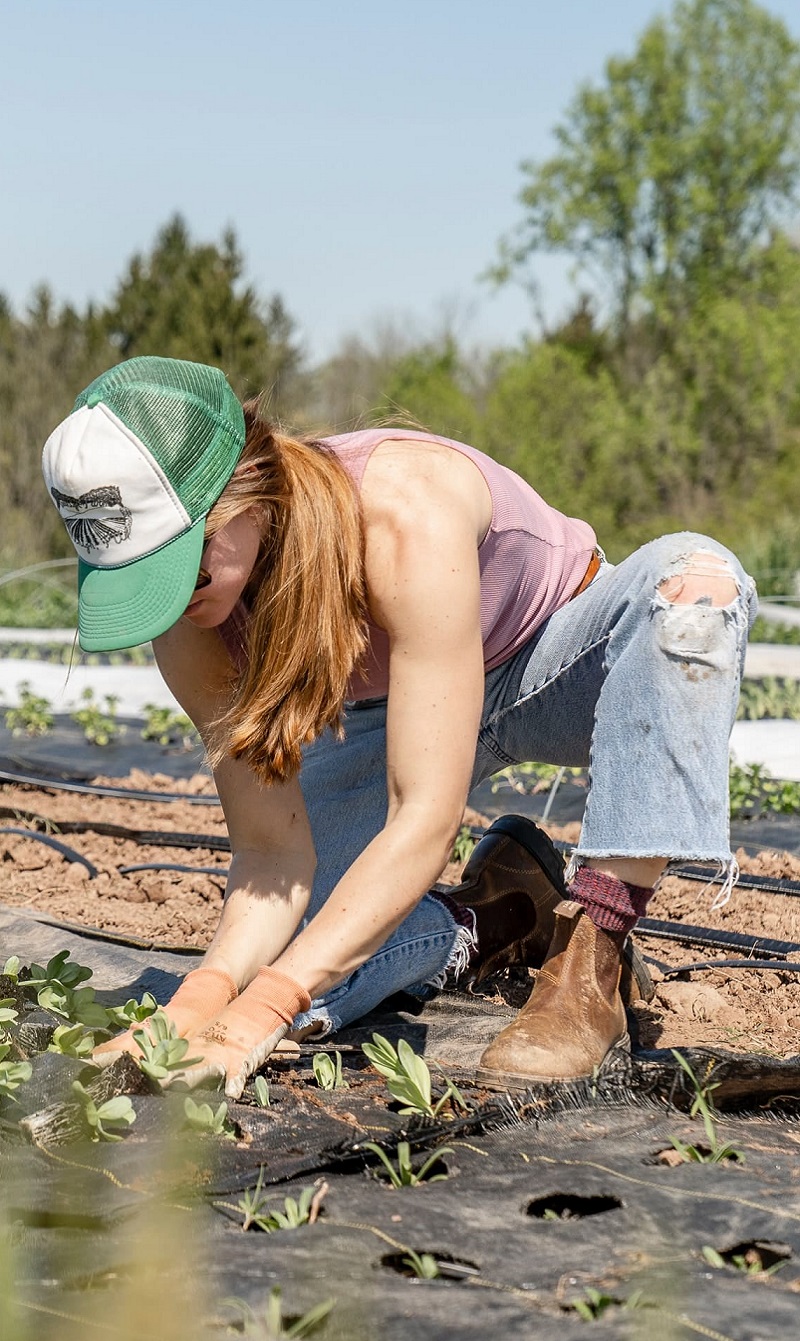Building Resilience in Industries
During WIEF-SIDC POWERTALK in April 2021, three individuals knee-deep in their industry talk about how their respective sectors can be resilient, become less dependent on governmental initiatives and generate collaborative efforts.
The pandemic has altered and redefined globalisation. Thus. there’s a need to address what are the next steps towards the post pandemic era. One thing for certain is technology plays a big part in the growth of industries such as manufacturing, agriculture as well as oil and gas future growth. WIEF-SIDC POWERTALK session is a platform to discuss case studies by practitioners as well as to learn from their success, challenges faced and how they overcame it. This edition of the webinar had three speakers discussing Post Pandemic Economic Landscape: Building Resilient Industries on 7 April 2021. The speakers were:
- Maciej Golubiewski, Head of Cabinet of Commissioner for Agriculture, European Commission (EC) in Belgium.
- Mattias Andersson, founder and CEO of MTEK Industry AB in Sweden.
- Dato’ Kamarul Redzuan Muhamed, Group CEO of UZMA Berhad in Malaysia.
The moderator for the two-hour virtual session was Tehmina Kaoosji, broadcast journalist in Malaysia.
Perspectives from the Manufacturing Industry
Mattias: I’ve been working with the manufacturing industry for 25 years and was actually one of the six members of Nokia’s data management group some 25 years ago. That was when we actually developed and deployed the first neural network in closed group machine learning. After working in 68 different countries helping companies reach operational excellence, reduce change-over times and production companies design better products, I’ve concluded that it’s all about helping companies understand where waste is.

Now, during this pandemic, we see that digital maturity has taken so many leaps forward. Everyone is now very much acquainted to using the latest and greatest tools for communication. Despite the stress this pandemic has on people, companies and governments, I believe we’ll exit this situation closer together and we can do that by using the digital tools we have. The major challenge we see in the industry, and we’ve been seeing this in the last 20 years, is a demographic challenge. We have an aging workforce and it’s been a challenge to find sufficiently skilled workforce. I believe, digitalisation is one of the key elements to solve that. We aren’t sufficiently prepared for this type of disruptions.
Also, we have a huge responsibility on the environmental impact. The way we’ve been working is not sustainable. We need to create manufacturing flows that are more visible and transparent, as well as more focused on value creation where people are key elements to this. We’ve to ensure continued sustainability in everything we do including consumption patterns, manufacturing patterns, supply chain set up and design to make sure that we create a world that we can live in today and tomorrow.
Historically, we’ve had a silo approach to manufacturing where we produced in countries with lower labour costs and not seeing the value that people actually bring to products and supply chains. Here is where digitalisation is an important tool. The new normal will consist of less travel, better visibility and more usage of digital tools in education that begins at lower school age.
What is the actual root cause of challenges we’re facing today? It’s not just COVID-19 because we’ve been struggling for the last 20 to 25 years and even before that. With the lack of visibility, we used to produce products with a focus on the highest volume and the lowest mix. We were using everything in order to produce as many units as possible at the lowest labour cost as possible. The trend was to manufacture in countries with low labour cost and for the companies to develop the population, ensuring the people are trained and possess higher education to get the country’s economy up and running.
I see a big shift in this trend in that manufacturing companies that are well developed adopting the pseudo way of production and philosophies where focus is on the human contribution to manufacturing. This may seem like a contradiction since everyone now talks about robotics, AI and lights out (fully automated) factories. At the same time there’s so much to do on digitising human labour and capture all the value that humans create. However, AI can’t provide creativity and thus, people are still needed to work and provide value to employers as well as society.
Still, the manufacturing industry need to digitise, digitally link, create transparency in supply chain and within manufacturing, add the next level of analytics to cross-correlate relations, product performance, track and trace of products as well as processes and be able to add the human aspect of value creation to manufacturing. To build a resilient industry, to move forward and to come out of the pandemic situation still standing with a more competitive and compelling offering, you must understand the end consumer desires and be concern about sustainability.
Digitising every part of the manufacturing process, every level of the supply chain and visualise the performance of products, processes, components and modules, as well as being able to predict the process outcome, will allow us to do more with less. This will reduce the waste of standing still and the waste of lead time. The way to do this is to connect all systems across the supply chain, not just within a factory but across factories and cross-correlate different process performances to predict performance of products. You can actually see quality issues coming up. Reducing standstill of machines will eliminate waste. How we consume products today isn’t sustainable in the long term but with the right digital tools and methodologies, we’ll be able to actually visualise where are the weaknesses in supply chains, in product designs and better understand consumers’ wants, when and how they want it.
Takeaways from Mattias
Now, MTEK is creating the Factory Intelligence system of today and tomorrow, using all the manufacturing expertise gained over the last 25 years from the factory floors that we visited globally. Everything comes down to the fact that people are the same all over the world. We have the desire and everyone wants to collaborate. We can now bring people together. The future isn’t nationalised, regionalised or globalised. It’s actually digitalised. We’re now entering into a very interesting future where we can use the latest digital tools to bring societies closer together. We’re already seeing that with webinars such as this.
We need to be much more aware of how we’re transporting stuff. Logistics systems and the entire supply chain must be connected. The opportunities which the pandemic has posed for the manufacturing industry include real time visibility. The Suez Canal incident in March 2021 shows that the supply chain of today is very much designed where products have to travel on a ship for several months. We can’t continue to have that situation where there are distributor supply chains without visibility. If we were capable to see when this Suez Canal incident happened, the companies that were able to understand where the products were and re-route them, still were able to supply to end customers.
To digitalise, for manufacturers who wish to retool their business strategy, start small and grow big. Always start with digitising human labour. One of the key elements of this is we have so much creativity on the planet. By starting to digitise their experience and how they work in standard operating procedures, that’s key to sustainable continuous improvement. How we gather and reuse the experience of operators, engineers and technicians, is the foundation of continuous improvement. If we don’t know where we start and we don’t know where to go, we will not have continuous improvement. We’ll just have continuous change.
Here’s the basis of digitalisation: If we can simply digitise anything from, how we put screws in to how we assemble products, if there’s a variation in the product design, how can we use that information to help design a better product? And with that, continue to reduce waste So, it’s start small and grow big, that’s the key thing.
When it comes to cybersecurity, one of the key things is that using multifactor authentication to make sure that device that speaks isn’t openly broadcasting to everyone. So, not just to monitor devices on inbound traffic, to have all the firewalls and ensure devices don’t speak to everyone. There must be good cybersecurity policy that we’re always looking into, adhering to and updating, that’s the key thing. As much as digitalisation is an extraordinary opportunity, it also brings with it a lot of responsibility. While we can’t expose everything to everyone, we still need to create transparency on the right information.
On the topic of AI, however, let’s not start with AI but let’s start with normal intelligence first. Product lifecycles are becoming shorter and shorter, we’re designing new products all the time. Of course, there’s AI models that you can apply on certain levels but at the same time, using the short term and reinforced learning approach that’ll give us a lot more benefits than throwing just unsupervised learning after information that becomes biased in just a couple of months. The same goes for robotics. I say that variation is the biggest threat to quality. It’s also the biggest threat to automation and AI even though AI helps us visualise as well as correct variations and predict when variations come. You need to have the domain expertise within the field to apply AI to create a valuable information stream from it.
Helpful Policies for the Agricultural Industry
Maciej: The agricultural sector is struggling with how to adapt to post-pandemic situation. I’m speaking not as a practitioner since I represent the regulatory and financial assistance body that provide a proper regulatory and financial environment for the sector. The main challenge was the sudden closure of food services at the start of the pandemic. First, understand that agricultural produce relies on seasonal and cross-border workers. While the EU is an internal market, there were member states that temporarily closed their borders. Consider that in any given year, over three billion tons of agricultural products are being moved around in the EU.

Agricultural producer organisations are an important part of the EU’s agricultural sector and they were affected by the disruptions brought about by COVID-19. These issues were resolved relatively quickly through interventions at EC level to unblock bottlenecks and allow supply chains to operate more efficiently as well as kept consumer prices in the aftermath at normal levels.
One of the successes was how farmers and other supply chain operators cooperated to find solutions. For example, a few supermarkets and local producers worked to redirect specialty products normally sold in restaurants to supermarkets. The producer organisations played a pivotal role in providing information to producers and allowing them to adjust to the impact of the crisis. Another example was when a processing plant was unable to find packaging materials but coordinated with contacts across the border in other member states to package the goods there and avoid food waste.
There was a need for flexibility, communication, building positive relationships and cooperating with other operators to turn challenges into successes in times of crisis. Basically, the more connected you are at the time, the better you deal with the crisis. To ensure resilience and towards a sustainable future, the EU food quality is at a global safety standard. But we need to transition to a sustainable food system. Which means, to ensure that the whole food system is resilient to economic and extraordinary shocks as well as it’s sustainable in terms of nutrition, health and ever evolving consumer preferences. So, we need to adopt farmers for the future, help them adapt to, for example, climate change and take care of the environment. Future resilience is closely linked to sustainability.
Then we came to the Farm to Fork idea. It’s basically a policy strategy adopted in May 2020 and it isn’t a purely agricultural policy but it’s kind of a vision to transform the way we produce across the board, distribute the consumer food, improve our health and environment. Farm to Fork strategy is an opportunity to reset the course towards a greener and more sustainable future. This requires effort across all points along the supply chain. The goals are to reduce environmental and climate footprint of the EU food system as well as to strengthen the sector’s resilience. We want to ensure food security which is very much linked to resilience and the increasing needs of a growing population. There’s also climate change and biodiversity loss that will impact production in the long term. What’s more, we want to lead the global transition towards sustainability.
So, what are some of the operational targets? They are quite radical in their ambition. Obviously, each member state has slightly different approach and starting points. It’s not one size fits all. To reduce the use and risk of chemical pesticides by 50 per cent in less than a decade and deal with nutrient losses, we sometimes go overboard when we try to increase our yields. This results in nitrogen pollution and things like that. Technology reduces nutrient losses.
This is where agritech comes in. The pandemic has shown how crucial digital technologies are. Farmers who were faced with problems with their supply chains went online to market directly to the consumers. Digitalisation is very high on the EC’s agenda. There’s a whole policy framework around digitalisation that will strengthen the competitiveness of the sector and contribute to the sustainability related objectives. It’ll enable farmers to work more efficiently and sustainably while consumers will have more transparency on how their food is produced and consists.
Digital technologies will enable farmers to easily access production and environmental conditions through various innovations like sensors. They can tailor, let’s say, irrigation techniques more precisely and reduce their emissions or inputs of fertilisers. Agrorobotics can support the production processes, for example, through weeding. We have special programs in research and innovation to promote digital technologies among farmers. The fact is, we’re overdue with digital transformation in the agricultural sectors. The EC provides support in terms of fund actions and boost innovation in agriculture through programs such as Horizon 2020.
40 per cent of Europeans live in cities and they want to feel closer to their food. Urban farming in a sense corresponds to that need especially in countries where there may be problems with land supply. But we need to put more research into urban farming and how to get it started. The pandemic showed that digitalisation, access to the internet and general digital technology play a huge part in building sustainability and resilience in the farming sector. Digital technology needs to be properly introduced and we are helping farmers through various initiatives to ensure they are up to date.
Takeaways from Maciej
Generational renewal is vital for the future of farming. Basically, we need to have farmers and we have a problem in Europe. Farming, specifically traditional farming, isn’t attractive to the young generation. Statistics show that farm managers below 35 years old constitute only about five per cent of all farms in the EU. If we don’t support youths to make a decent living through farming, we will lose on multiple fronts.
Youths have a key role to play in the transition for sustainable, innovative agriculture and holding the key to attract more young people to agriculture. We need to lead by example. This is why EC’s agricultural policy goes under the name Common Agricultural Policy (CAP) and it focuses on investing in generational renewal through programs targeted at young farmers that help them set up, subsidies, farming activities, training, knowledge transfer and diversification opportunities if farmers want to move into some other areas as well as from one mono activity to more diverse production.
EC promotes investments in broadband and its applications with the objective to make rural areas more attractive places to live and work for younger people as well as for those living in the rural areas. CAP’s framework is flexible enough to support different needs of young farmers. In a nutshell, this is where we should go in terms of promoting resilience and where those key areas are. The pandemic has taught a big lesson, gave us a little pause to put a lot of thought in agriculture. To ensure we’re shielded a little bit more, then digitalisation is key. Direct marketing and more use of the internet hold a lot of opportunities that can shorten production as well as supply chains.
Technological solutions such as internet applications as well as platforms provide alternatives to sell products and agritech has, and will, transform agriculture. This is a necessity. Farmers must realise that they have to be a bit more attuned to the digital and technological needs of the sector. In terms of capital when it comes to technological transformations or digital investments, there’s CAP, of course. In 2020, there was EUR2.8 billion of funding budget. Within CAP there’s Rural Development Program that helps young farmers to set up their business. There are financial facilities in the EU that provide assistance, also in terms of knowledge and understanding of banking system, access to local banks and the like.
Boom and Bust of the Oil and Gas Industry
Dato’ Kamarul: Every business requires three things and they are growth, profit and performance sustainability. Balancing these three is important if you go through the cyclical type of business. In the first 100 years, oil prices have been pretty consistent from 1870s to 1970s. Then in 1973, the oil crisis came along with the energy crisis and oil gluts a few years later. In 2000, we saw the recession and 2008, a global financial crisis. 2014 to 2020 was an extremely volatile business period that led to where we are today, in the midst of a pandemic.
While most crisis ends quickly, the COVID-19 pandemic, unfortunately, seems to last longer than anticipated. Uzma Berhad was established in 2000 and has seen quite a bit of the cyclical nature of the oil and gas (O&G) business. Many thinks of the O&G industry as one with a lot of money. In reality, since 2005 to 2019 the industry has brought very little returns to its shareholders. The oil service company such as Uzma, have seen a contraction in the total annual returns to shareholders. This isn’t in Malaysia alone. It’s happening globally.

The industry is facing a serious crunch and requires a structure change to remain relevant. In the first eight years, Uzma grew rapidly but this growth was fuelled by the hungry demands of China and India for hydrocarbons. We worked in more than 36 countries with over 50 customers around the world and that propelled the company’s growth. During the 2008 financial crisis, we decided to focus on technology and acquired a lot of technology from Russia, the United Kingdom, Canada, Thailand, Indonesia and Philippines. Uzma bought a few companies, put together their technologies and provide solutions to our customers.
The ability for us to adapt then helped us survive that financial crisis. We noticed that since 2014, the oil price was already artificially high and that it’ll come crashing down. So, we decided to come up with our own plan. In 2018, we launched our five years plan to essentially diversify the business. The plan was doing very well until the pandemic hit which made us revised the five-year plan in 2020. Our response plan is to reset. We decided to control certain things especially expenditure and growth. As an alternative income, we decided on renewable energy and digitalisation. To begin, we created a cost leadership programme to preserve our cash.
We go into simplifications, meaning that sometimes we just design once but can build multiple times – going back to basics, using fit for purpose technology and a simple standard instead of a very high standard meant for North Sea. We want strategic acquisitions, reduce duplications and monitor our assets in more detail. Alternative income wise, we diversified into non-O&G and this move is very critical for us since we’ve a certain target and we’re very aggressive about it. We’ve also expanded into peripheral business such as gas and LNG. Staying resilient, means going a bit more regional for us. By the time Uzma went public in 2008, 50 per cent of its business was generated overseas.
Takeaways from Dato’ Kamarul
Unlike other industries, the O&G industry isn’t quite ready for digitalisation. First of all, data is a gold mine for the oil industry. To ensure that digitalisation works well, you need to liberalise data and this can be difficult in O&G industry. Another thing is, in Malaysia for example, there’s not enough bandwidth to do proper digital twins when we’re offshore.
O&G remains our core business because that’s where our expertise lies. In terms of non-O&G, it’ll be our growth strategy and it needs to move fast towards a target that contributes 40 per cent of our top line within five years. However, it’s not about profit all the time. There must be a balance between profit, growth and sustainability. The pandemic has opened up opportunities to collaborate among service companies, service company with operators, regulators, government and even competitors. There must be a long-term vision.
Main photo by sol on Unsplash.




